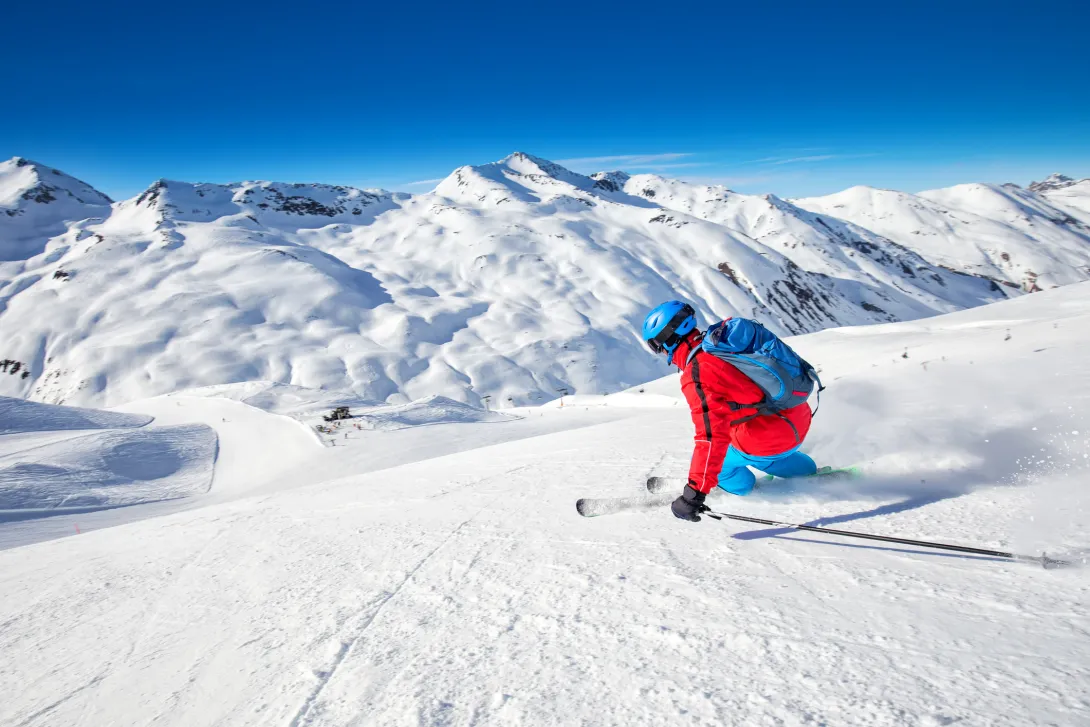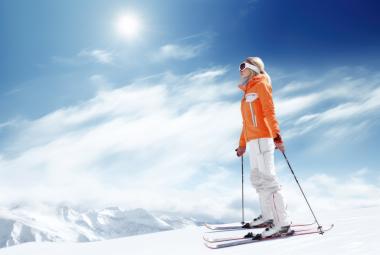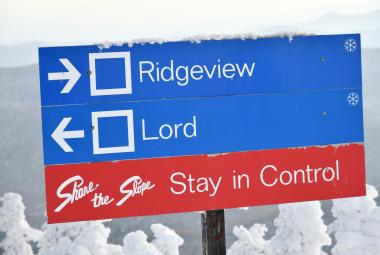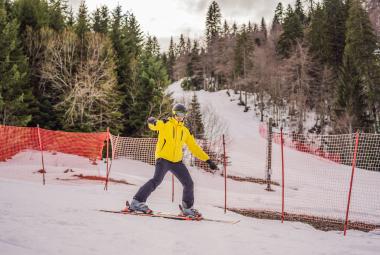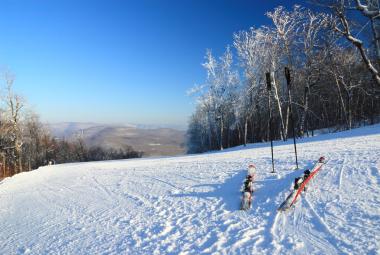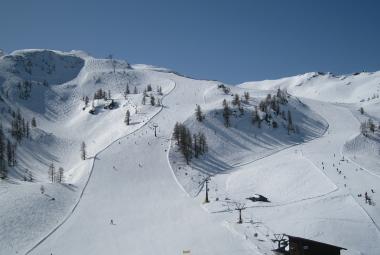Skiing can be a thrilling and rewarding winter activity, but it's important to come prepared with the right gear. If you're new to skiing, it can be overwhelming to figure out what you need to bring with you on the slopes.
To help you get started, we've compiled a list of the top 9 ski essentials for beginners. These items will help ensure you have a comfortable and enjoyable day on the mountain, whether you're a first-time skier or just new to skiing in general.
If you have nothing else, at least have these top 9 ski essentials for beginners!
1. A Good Ski Helmet
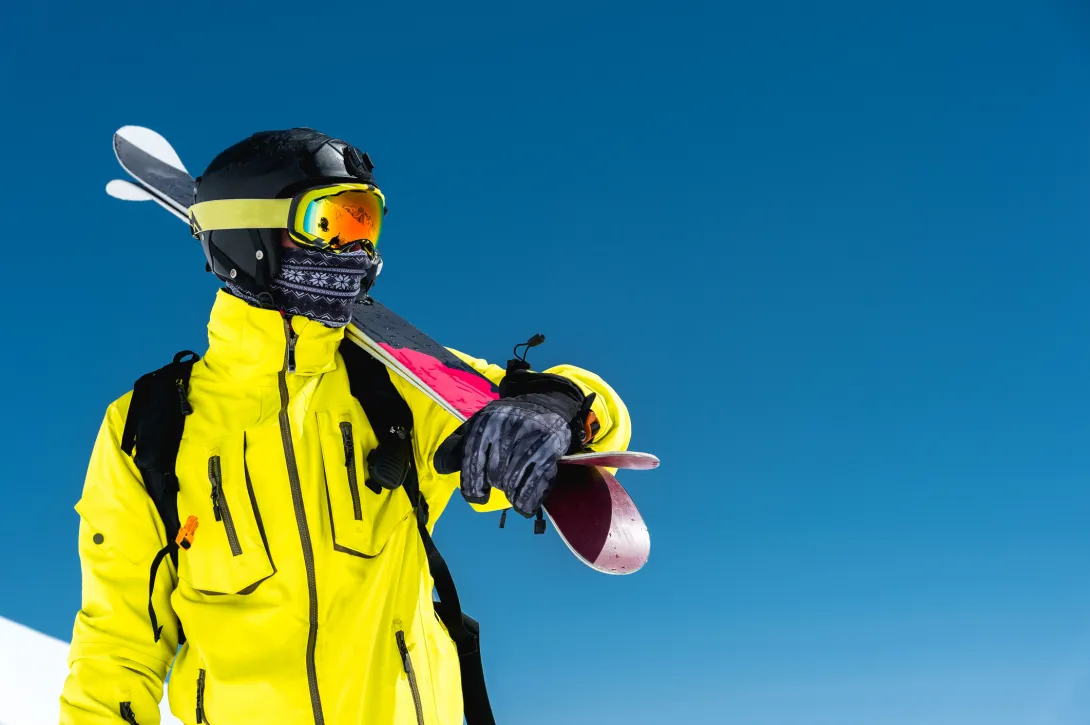
A good ski helmet is one of the top 10 ski essentials for beginners because it is an important safety item that can help protect your head in the event of a fall or collision on the slopes.
Skiing and snowboarding can be high-speed sports, and accidents can happen even to experienced skiers. A good ski helmet can help absorb the impact of a fall or collision and reduce the risk of serious head injury.
In addition, ski helmets technology has come a long way in recent years, and many helmets models now offer features like ventilation, audio compatibility, and removable lining to keep you comfortable and focused on the slopes. It's important for all skiers, especially beginners, to invest in a good ski helmet.
2. The Right Ski Lenses For Conditions
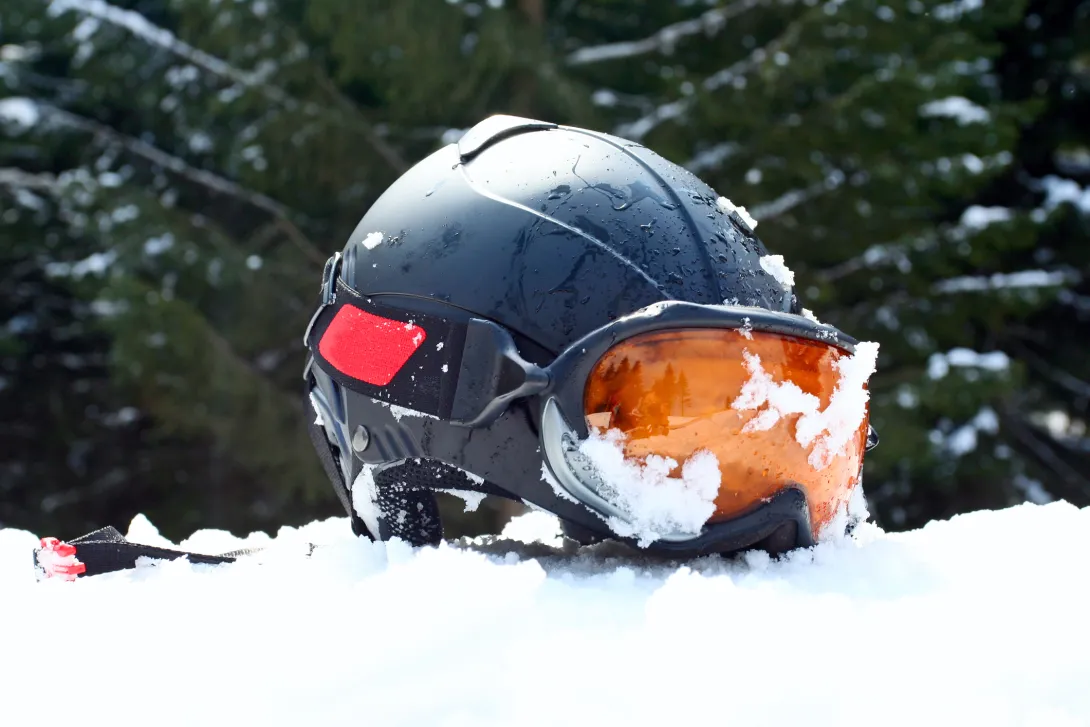
The goggle lens you should wear on a bluebird day is very different than the goggle lens you should wear on a whiteout day. Having the right ski lenses for the conditions will help protect your eyes from the elements and improve your visibility on the slopes.
Skiing down the mountain can be harsh on your eyes, with bright sunlight, glare from the snow, and cold wind all contributing to eye fatigue and irritation.
Wearing the right ski lenses can help reduce these effects and keep your eyes comfortable and focused. I recommend having a light pair of anti-fog lenses in a yellow or rosey tint for cloudy days, and a pair of darker blue or green lenses for sunny days.
3. The Right Skis
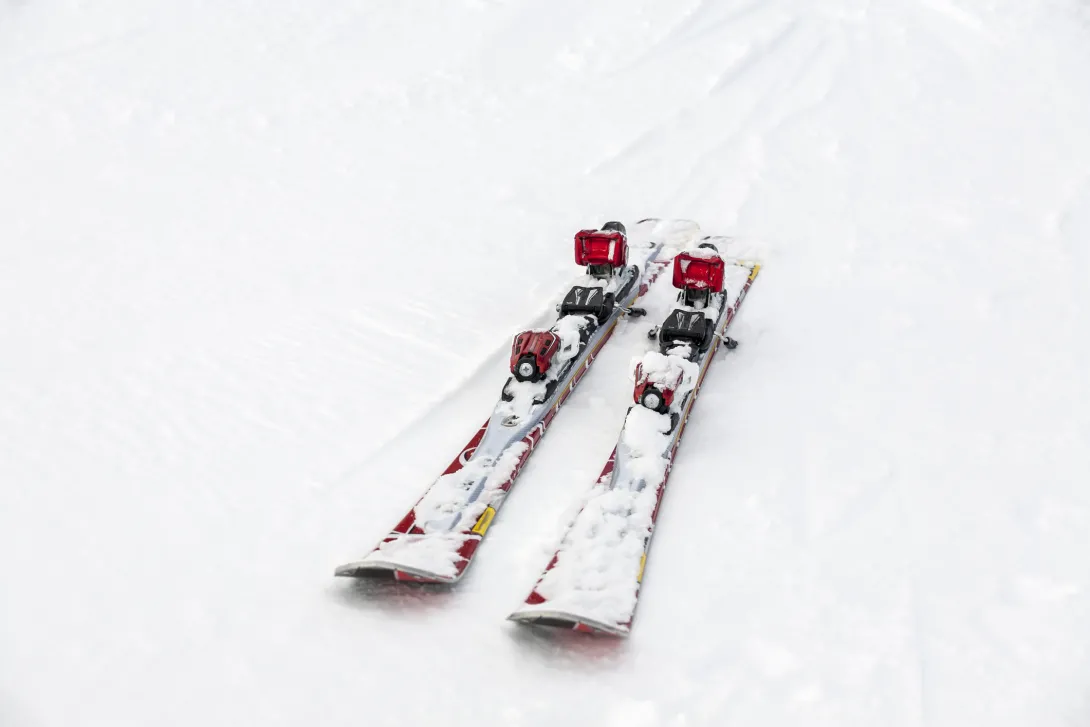
Having the right pair of skis for you will make a big difference in your enjoyment and progress on the slopes. The type of skis you choose will depend on your size, ability level, terrain, and personal style. Beginner skiers may want to start with a softer, more forgiving ski that is easier to control, while more advanced skiers may prefer a stiffer, more precise ski for higher speeds and more challenging terrain.
It's important to make sure your skis are the right length and width for your body and ability level. Skis that are too long or too short can be difficult to control, while skis that are too narrow or too wide can affect your balance and stability. The employees at the ski shop will be able to help you find the right pair of skis for your needs!
Read more: Guide To Buying Skis For Beginners
4. Hand Warmers And Toe Warmers
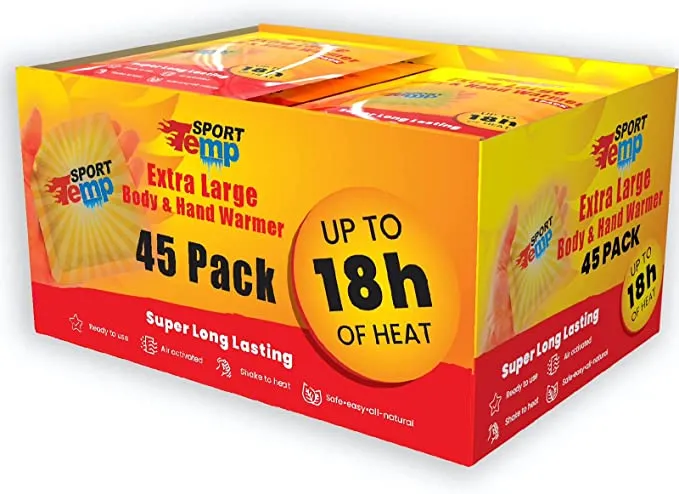
Hand warmers and toe warmers will help keep your hands and feet warm and comfortable on the slopes, which is important for both safety and enjoyment. Cold hands and feet can be a major distraction and discomfort while skiing, and can also lead to frostbite and other cold-related injuries.
By using hand and toe warmers, you can help keep your extremities warm and avoid these problems. I recommend just keeping a large bag full of these in your car in the winter. You never know when you’ll want them, and it’ll cost you an arm and a leg if you forget your hand and toe warmers and have to purchase them closer to the ski resort.
Read more: What to Wear Skiing
5. Warm Base Layers
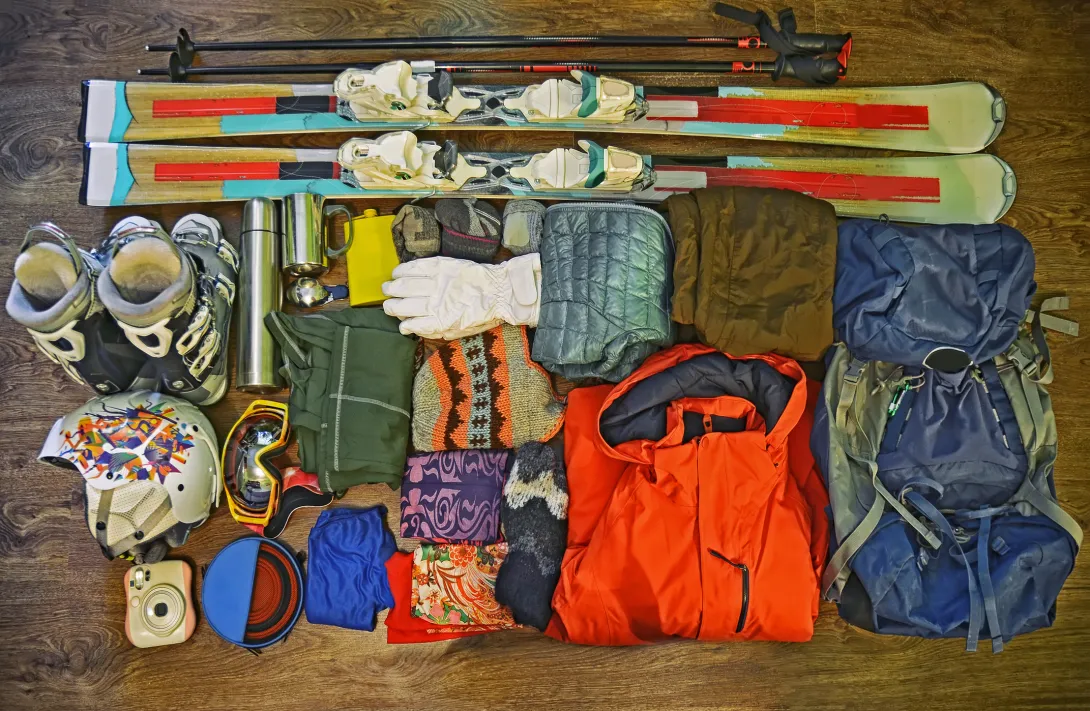
Warm base layers are an important part of any ski or snowboard outfit, and will help keep you warm and comfortable on the mountain. Base layers are the first layer of clothing that you wear against your skin, and they help to wick moisture away from your body to keep you dry. They also help to regulate your body temperature by providing insulation against the cold.
I recommend wearing base layers that are made from materials like fleece, merino wool, or synthetic fibers. Choose base layers that are warm, breathable, and moisture-wicking that fits snugly against your skin, but is not too tight or restrictive.
Read more: The Ultimate Ski Packing List
6. A Waterproof Shell
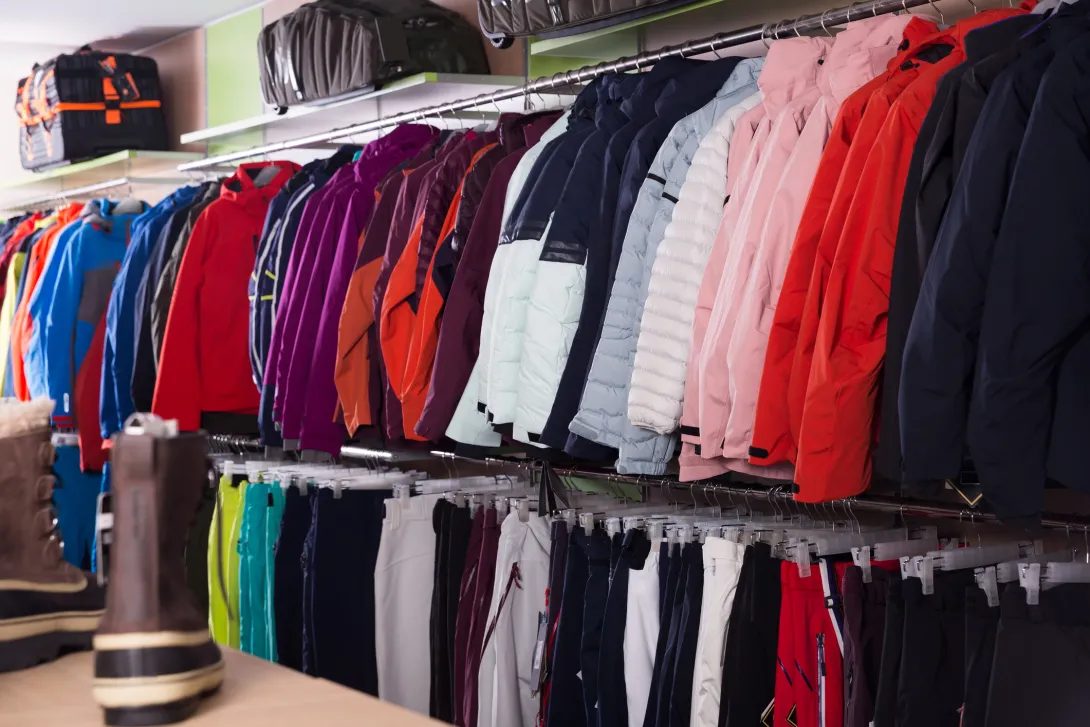
A waterproof shell is an important layer of protection against the elements that will help keep you dry and comfortable on the slopes. Your shell will be worn over your base and mid layers, and should be made from a waterproof, wind resistant, and breathable material like Gore-Tex or similar.
In addition to keeping you dry, these materials will help protect you from the wind and cold. Many shell jackets and pants also come with features like zippered vents, adjustable cuffs, and a removable hood to help you regulate your temperature and keep you comfortable throughout your ski day.
A good shell is definitely one of the most important investments you should make as a beginner skier!
Read more: What to wear under ski pants?
7. Plenty of Snacks and Water
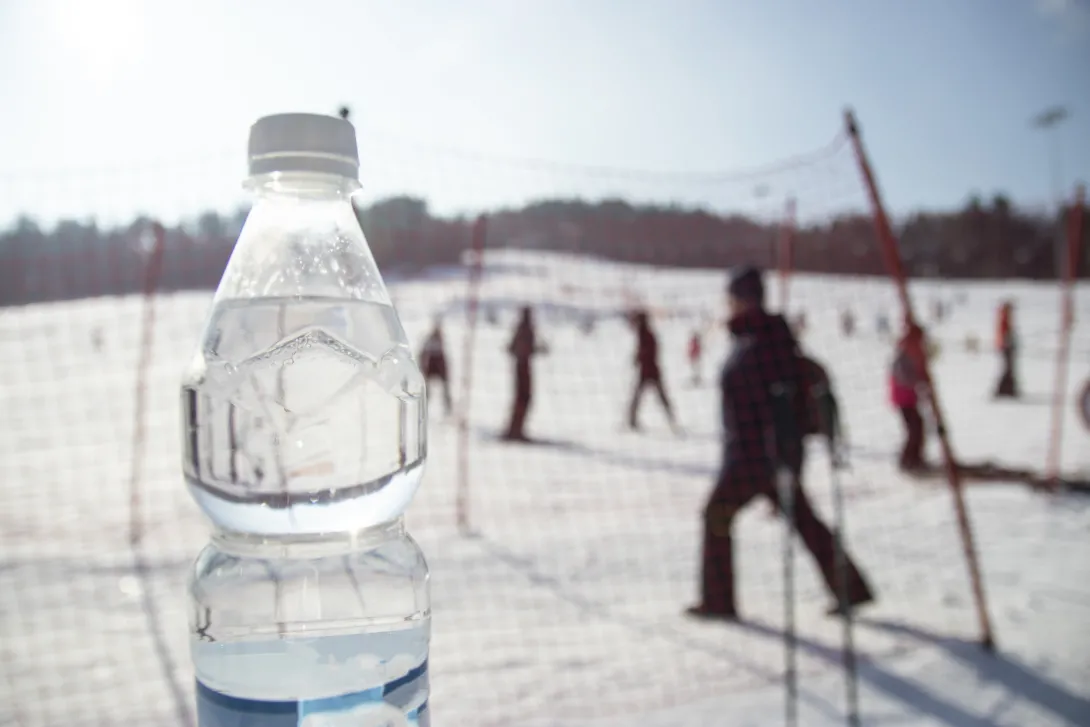
Don’t forget to pack plenty of snacks and water in order to stay hydrated and keep up your energy levels up on the mountain. Skiing may not seem like a physically demanding activity but it certainly is and it's important to fuel your body with the right nutrients to keep you going. Drinking plenty of water is important to prevent dehydration and altitude sickness.
Some good snacks to bring with you on the mountain include energy bars, nuts, fruit, and jerky. It's also a good idea to bring a hydration pack with you to easily drink water throughout the day. I always make a point to take a swig anytime I am on the chairlift or stop to take a break.
Read more: 8 Best Skiing Tips For Beginners
8. Ski Lessons
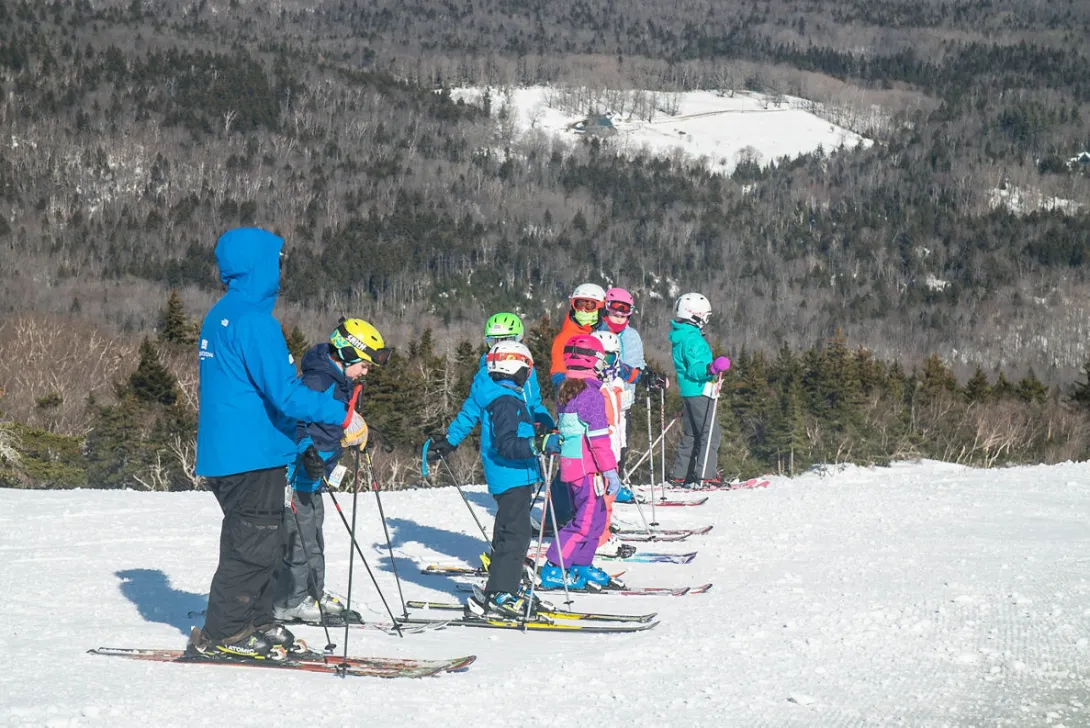
Ski lessons will help you learn the basics of skiing and improve your skills and confidence on the mountain. Skiing can be a challenging sport, and it’s important to learn proper technique and safety practices while getting feedback from an experienced instructor. There are several types of ski lessons available for all budgets, including group lessons and private lessons.
Group lessons are a good option for beginners who want to learn the basics of skiing with others at a similar ability level, while private lessons offer more personalized instruction and a chance to get one-on-one feedback every run.
Overall, ski lessons are one of the most valuable investments for beginners on the ski slopes!
Read more: Is It Worth Getting Ski Lessons?
9. A Positive Attitude

If you bring nothing else, at least bring a positive attitude with you out on the mountain!
A positive attitude will help you approach challenges on the mountain with confidence and resilience. It can also help you stay calm and composed in difficult or stressful situations, and overall enjoy your day more.
Having a positive attitude doesn't mean you have to be perfect or never make mistakes. It just means that you approach challenges with a can-do attitude, and try to learn and improve from your experiences. It's okay to have setbacks or struggles while skiing, but it's important to stay positive and keep a growth mindset to help you progress and make your time on the mountain more enjoyable and rewarding.

